Mice overexpressing BAFF develop a commensal flora-dependent, IgA-associated nephropathy
- PMID: 21881212
- PMCID: PMC3195458
- DOI: 10.1172/JCI45563
Mice overexpressing BAFF develop a commensal flora-dependent, IgA-associated nephropathy
Erratum in
- J Clin Invest. 2012 Feb 1;122(2):778
Abstract
B cell activation factor of the TNF family (BAFF) is a potent B cell survival factor. BAFF overexpressing transgenic mice (BAFF-Tg mice) exhibit features of autoimmune disease, including B cell hyperplasia and hypergammaglobulinemia, and develop fatal nephritis with age. However, basal serum IgA levels are also elevated, suggesting that the pathology in these mice may be more complex than initially appreciated. Consistent with this, we demonstrate here that BAFF-Tg mice have mesangial deposits of IgA along with high circulating levels of polymeric IgA that is aberrantly glycosylated. Renal disease in BAFF-Tg mice was associated with IgA, because serum IgA was highly elevated in nephritic mice and BAFF-Tg mice with genetic deletion of IgA exhibited less renal pathology. The presence of commensal flora was essential for the elevated serum IgA phenotype, and, unexpectedly, commensal bacteria-reactive IgA antibodies were found in the blood. These data illustrate how excess B cell survival signaling perturbs the normal balance with the microbiota, leading to a breach in the normal mucosal-peripheral compartmentalization. Such breaches may predispose the nonmucosal system to certain immune diseases. Indeed, we found that a subset of patients with IgA nephropathy had elevated serum levels of a proliferation inducing ligand (APRIL), a cytokine related to BAFF. These parallels between BAFF-Tg mice and human IgA nephropathy may provide a new framework to explore connections between mucosal environments and renal pathology.
Figures
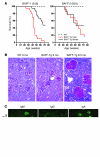

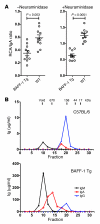
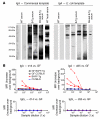

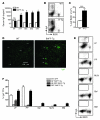

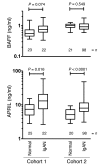
Similar articles
-
Murine Models of Human IgA Nephropathy.Semin Nephrol. 2018 Sep;38(5):513-520. doi: 10.1016/j.semnephrol.2018.05.021. Semin Nephrol. 2018. PMID: 30177023 Review.
-
BAFF induces a hyper-IgA syndrome in the intestinal lamina propria concomitant with IgA deposition in the kidney independent of LIGHT.Cell Immunol. 2006 Jun;241(2):85-94. doi: 10.1016/j.cellimm.2006.08.002. Epub 2006 Sep 20. Cell Immunol. 2006. PMID: 16987502
-
TACI deletion protects against progressive murine lupus nephritis induced by BAFF overexpression.Kidney Int. 2018 Oct;94(4):728-740. doi: 10.1016/j.kint.2018.03.012. Epub 2018 Jun 12. Kidney Int. 2018. PMID: 29907458 Free PMC article.
-
Interleukin-33 Exacerbates IgA Glomerulonephritis in Transgenic Mice Overexpressing B Cell Activating Factor.J Am Soc Nephrol. 2022 May;33(5):966-984. doi: 10.1681/ASN.2021081145. Epub 2022 Apr 6. J Am Soc Nephrol. 2022. PMID: 35387873 Free PMC article.
-
The Role of Glomerular and Serum Expression of Lymphocyte Activating Factors BAFF and APRIL in Patient with Membranous and IgA Nephropathies.Arch Immunol Ther Exp (Warsz). 2025 Jun 5;73(1). doi: 10.2478/aite-2025-0018. eCollection 2025 Jan 1. Arch Immunol Ther Exp (Warsz). 2025. PMID: 40472229 Review.
Cited by
-
Comparative analysis of the tonsillar microbiota in IgA nephropathy and other glomerular diseases.Sci Rep. 2020 Oct 1;10(1):16206. doi: 10.1038/s41598-020-73035-x. Sci Rep. 2020. PMID: 33004860 Free PMC article.
-
Novel Treatment Paradigms: Primary IgA Nephropathy.Kidney Int Rep. 2023 Dec 1;9(2):203-213. doi: 10.1016/j.ekir.2023.11.026. eCollection 2024 Feb. Kidney Int Rep. 2023. PMID: 38344739 Free PMC article. Review.
-
The Wanderings of Gut-Derived IgA Plasma Cells: Impact on Systemic Immune Responses.Front Immunol. 2021 Apr 15;12:670290. doi: 10.3389/fimmu.2021.670290. eCollection 2021. Front Immunol. 2021. PMID: 33936114 Free PMC article. Review.
-
The Gut and Kidney Crosstalk in Immunoglobulin A Nephropathy.Kidney360. 2022 Jun 27;3(9):1630-1639. doi: 10.34067/KID.0002382022. eCollection 2022 Sep 29. Kidney360. 2022. PMID: 36245664 Free PMC article. Review.
-
The non-canonical NF-κB pathway in immunity and inflammation.Nat Rev Immunol. 2017 Sep;17(9):545-558. doi: 10.1038/nri.2017.52. Epub 2017 Jun 5. Nat Rev Immunol. 2017. PMID: 28580957 Free PMC article. Review.
References
Publication types
MeSH terms
Substances
Grants and funding
- DK082753/DK/NIDDK NIH HHS/United States
- R21 DK075868/DK/NIDDK NIH HHS/United States
- DK080301/DK/NIDDK NIH HHS/United States
- DK077279/DK/NIDDK NIH HHS/United States
- R21 DK080301/DK/NIDDK NIH HHS/United States
- R01 DK078244/DK/NIDDK NIH HHS/United States
- R01 DK071802/DK/NIDDK NIH HHS/United States
- DK083663/DK/NIDDK NIH HHS/United States
- DK078244/DK/NIDDK NIH HHS/United States
- DK075868/DK/NIDDK NIH HHS/United States
- DK071802/DK/NIDDK NIH HHS/United States
- R21 DK083663/DK/NIDDK NIH HHS/United States
- MOP no. 67157/CAPMC/ CIHR/Canada
- R01 DK082753/DK/NIDDK NIH HHS/United States
- R56 DK078244/DK/NIDDK NIH HHS/United States
- R21 DK077279/DK/NIDDK NIH HHS/United States
LinkOut - more resources
Full Text Sources
Other Literature Sources
Molecular Biology Databases
Miscellaneous

